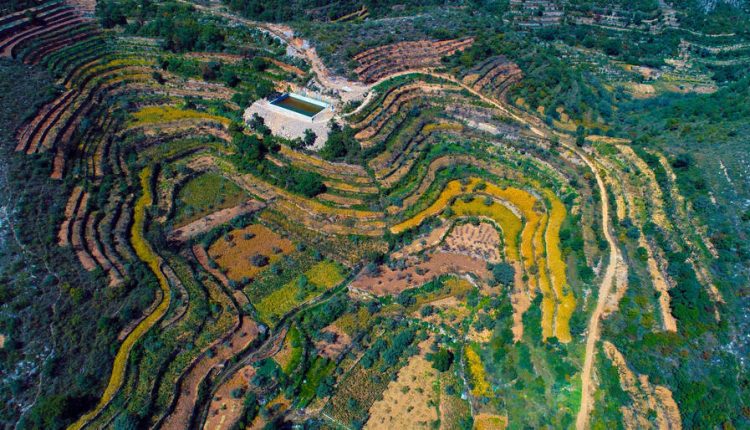20 years of celebrating the ‘culture’ in agriculture
Globally Important Agricultural Heritage Systems highlight centuries of traditions and techniques
Stunning natural landscapes evolving over centuries, Globally Important Agricultural Heritage Systems (GIAHS) sustain communities and their cultures simultaneously. Within these systems, a symbiotic relationship exists between the agricultural landscape and the wider social environment. Just as the communities depend on these ecosystems for their livelihoods, the conservation of these ecosystems rests on the traditional knowledge and sustainable practices of these communities.
Shaping and safeguarding the unique landscapes, this knowledge is embedded in the traditions and cultures of the communities. It is celebrated in festivals, incorporated in languages, practiced in rituals and passed down from generation to generation. These rich cultural traditions are not only interesting, but they are also crucial to conservation and transmission of traditional knowledge and techniques that help preserve natural resources.
In celebration of the 20th anniversary of FAO’s GIAHS programme, here are four recently designated sites and their cultural importance:
Shexian Dryland Stone Terraced System, China
The Stone Terraced System in the Shexian dryland region dates back to the Yuan Dynasty. This rain-fed agricultural system consists of a series of stone-ridged terraces built high in the mountains of China’s Shexian county. The highest terrace is at an elevation of over 1 000 metres with a slope gradient of more than 50 degrees. The local communities use these terraces to cultivate diverse grain crops such as millet, cash crops and economic fruit trees, such as walnut and Chinese prickly ash trees.
The community’s farming techniques and cultural practices conserve the landscape and ecosystem as well as their food and livelihood security. Locals pass on agricultural wisdom through farming idioms such as “sowing at the start of rain, growing during the rain and harvesting at the end of rain” to describe the optimal use of precipitation in their agricultural practices. Festive customs and food culture also center on the coarse cereals produced in Shexian’s terraces. For example, to celebrate Lunar New Year, villagers make large amounts of millet pancakes which are consumed until the 15th day of the first month of the new year.
Anxi Tieguanyin Tea Culture System, China
It is in the terraced tea gardens of Anxi, China where the Tieguanyin tea tree was discovered. This is the tree from which a beloved variety of Oolong tea comes, and consequently this area was also seen as the origin of Oolong tea craftsmanship. Steeped in history, the Anxi tea culture system dates back to the Song Dynasty (960 – 1279 A.D.) and was spread to the world via the Maritime Silk Road. More than 100 tea varieties exist on these tea terraces and generations of experimentation and adaptation by farmers have contributed to improved tea growing techniques globally.
The Anxi Tieguanyin tea culture influenced the region’s agricultural society as well as religious beliefs, art and literature among others. The Tea Battle, for instance, began with the development of Oolong and Tieguanyin tea. Farmers needed a way to communicate, learn and compete with each other about tea-making techniques and thus, integrated this competition over the quality of tealeaves into their social life.
Biwa lake to land integrated system, Japan
The Biwa lake to land integrated system blends traditional inland water fisheries with rice paddy agriculture where both the lake and surrounding paddy fields jointly nurture fish. Fishermen in this area have utilized and improved various fishing methods for over 1 000 years. They have adapted local culture and social rules to ensure the sustainability of natural resources and conservation of the ecosystem. Fisher organizations, historically created to avoid competition and protect the availability of resources through restricted fishing techniques, still exist to this day. These rules are effectively enforced and as a result, the restrictions have been successful in increasing the prevalence of important endemic species.
Lake Biwa is home to 16 endemic fish species and is a place of rich culinary culture. Narezushi, a preserved food made by pickling various local lake fish in rice, is an example of the co-evolution between biodiversity and their cuisine. Locals serve this dish on special occasions to welcome guests and as an offering to the gods during festivals.
Fruit Cultivation System in Kyoutou Region, Yamanashi, Japan
Japan’s Kyoutou region’s fruit cultivation has prospered over centuries due to adaptive farming methods, such as special vineyard trellises. Suited to the high rainfall and humid conditions of the region, the Koshu-style trellises combined with widely spaced large vines allow farmers to minimize pest problems and manage vine vigor to safeguard grape production crucial to rural livelihoods.
This region is thought to be the birthplace of Japanese grape cultivation that dates back at least 800 years. The production of grapes is mostly for direct consumption and tourism. In addition to grapes, other fruits such as peaches, plums and persimmons with many of their varieties grow on these farmlands.
Cultural practices and local customs embrace fruit farming. For instance, festivals and events involve prayers for good harvests from their fruit trees, and fruits cultivated here serve as gifts to bring to temples and shrines, a practice of everyday life.
Culture plays a significant role in sustaining agricultural practices and knowledge. While there are many reasons for which communities developed these traditions, not the least of which is survival, it is in part the cultural aspect of agriculture that is imbued in everyday lives of the communities and passed down to next generations, continuing to conserve these globally important systems.


Comments are closed.